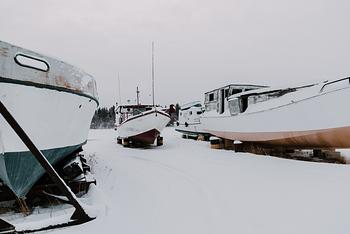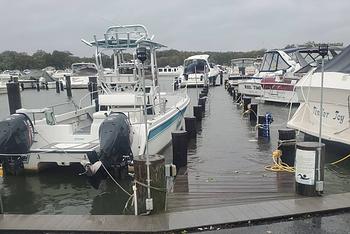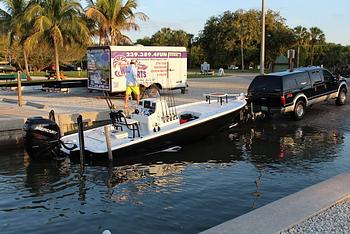The summer sailing season has come to an end, and those long balmy days on the water wearing just shorts and t-shirts, sipping ice cold drinks and watching the kids frolic in the waves are sadly coming to an end. Or are they? While swimming and wearing shorts and t-shirts might be over for this year, just because winter has arrived doesn’t mean you have to stop boating. In fact, winter cruising is hugely rewarding, the low sun, flat sparkling seas and deserted cruising grounds opening up the possibility for completely different adventures. So swap the ice-cold drinks for a steaming mug of cocoa, wrap up warm and set off for a day of blowing away the cobwebs. There are a few tweaks and considerations you’ll need to make to ensure your boat is winter-ready so that you stay safe and comfortable.
Here we take a look at the 15 boating tips you need to keep in mind:
1 – Keep the Battery Charged
Boat batteries, like those in cars, don’t really like cold weather and use more power to start than when temperatures are warmer. Ensure your batteries are topped up at all times, either by buying a trickle charger that you can use whenever the motor isn’t charging it or by installing a small solar panel. You could always take it home at the end of a day of winter boating and recharge it too.
2 - Check the Engine before Winter Sets in
Before the colder weather arrives, give your engine a check-up, as motors find it harder to start in lower temperatures. While it’s unlikely that temperatures will go so low that they will cause the engine to freeze, ensuring it’s topped up with coolant and antifreeze is a good precautionary measure.
3 – Avoid Condensation
This is one of the biggest challenges of winter cruising and is easier said than done. Cold outside temperatures combined with our warm breath ultimately create condensation inside the boat which leads to mould production. Using a small dehumidifier overnight when in a marina is a good way to reduce condensation, but insulation in both the interior of the boat and the windows themselves is another way to keep it at bay. Whenever possible, keep air flowing through the boat.
4 – Checks for Leaks
Before winter kicks in give your boat a thorough check for anywhere which might have a small leak. When water gets in and freezes it expands and can cause damage. Be sure to check everything from windows and portholes to seacocks and drains.
5 – Keep Your Lines, Sails and Rigging Dry
When lines touch the decks and get wet, they can then freeze when temperatures plummet. Once frozen lines can have difficulties getting through blocks and rope clutchers as they are stiff and swollen. Try and keep lines as dry as you can, and use ventilated bags for sheets and halyards to keep them off the deck. When it comes to sails, it can be a good idea to take spinnakers or headsails home with you after a day of sailing to let them dry out properly. Stowed away they might start to form mildew and mould.
6 – De-Ice the Decks
Accidents can happen when the decks get covered with ice. It’s important to ensure that before you head out of the marina you give them a slosh of seawater and a brush to remove any icy patches. Sturdy footwear is imperative too, both to keep your feet warm (there’s nothing worse than freezing toes) and to give you a good, safe grip on the decks.
7 – De-Ice Your Mooring
Likewise, pontoons, quays, and jetties can get icy in the winter and make loading and boarding slippery and dangerous. Using a specialist decking cleaner could help reduce the ice, or alternatively good old seawater and a scrubbing brush work wonders. Tread lightly, wear a lifejacket, and be aware of the hazards.
8 – Choose Your Sailing Weather Carefully
To get the most enjoyment from winter sailing it’s best to choose days with light winds. Wind chill will be a factor and, while appropriate clothing is imperative (we’ll get to that in a minute), you don’t want to be out in strong winds feeling cold and miserable. It’s also worth keeping in mind that beautiful, crisp sunny winter days are wonderful, but the sun’s UV rays can still be strong so be sure to wear appropriate sunscreen and sunglasses as protection.
9 – Plan Short Voyages
If you’re planning on day cruising, keep in mind that winter days are much shorter than in summer, and dark sets in quickly. You’ll want to plan a voyage that doesn’t push the limits of daylight hours and allows you plenty of time to get back to the marina. This is especially so if you’re out in light winds and are cruising at slower speeds. Choose one of your favourite destinations nearby and enjoy the simple pleasure of being out on the water. If you’re planning to go further, or do an overnight voyage, leave early in the morning and be at your destination before dark (and cold) descends.
10 - Invest in a Good Cabin Heater
Being cold isn’t fun, and keeping the cabin nice and toasty is key to your enjoyment. When you’re onshore power, an oil-filled radiator is good for overnight use, both for warmth and reducing condensation. When you’re out on the water though, diesel heaters or air-blown heaters are one of the best options. Using the boat’s diesel tank and battery, they are safe (combustion gases are exhausted over the side) and effective way of keeping the inside of your boat dry and warm. You won’t be able to run it off your battery all night though. Read on - Storing your Boat for Winter
11 – Wear the Right Clothing
We could talk all day about winter sailing attire, with manufacturers producing ever warmer and more-lightweight products to ensure we stay toasty but comfortable. Ultimately, being cold isn’t a fun day out for anyone, so make sure you are sporting windproof fabrics, plenty of insulating layers, thick yet lightweight gloves and a hat that covers the ears. Fleece underclothes are recommended for their insulating properties, while a foul-weather gear is good to have on board in case you get caught in adverse conditions. With all that clothing on, combined with frigid waters, falling overboard isn’t a particularly good idea, so a lifejacket is a must. You may also want to consider having immersion suits on board in case of an emergency.
12 – Keep Warm
Hot water bottles tucked into clothing, plenty of hot drinks, and warming soups and stews will heat your core and keep you feeling comfortable all day. A thermos is a good addition too as it’ll keep your drink (and fingers) warm on deck for longer. If you’re planning on staying overnight on the boat you’ll also want some seriously thick bedding. Sleeping bags keep the heat in better than duvets and you can buy high tog ones of 12 to 13.5 designed for winter use. A tog rating is the measure of thermal insulation, so the higher the number, the warmer it will keep you. Read on - > How to keep yourself Warmer in the Winter
13 – Switch your Gas to Propane
You’ll likely get through much more gas than usual making copious amounts of cocoa and tea, so be sure to have plenty before you set off (stocking up is recommended as many suppliers close during the off-season). You may also want to switch to propane for the winter months which has a lower freezing point.
14 – Consider a Cockpit Tent
For sailing yachts, a cockpit tent can be a good purchase for a variety of reasons. The obvious one is to keep sails, clothing or anything else that needs to dry outside protected from the elements. It also means you can leave the hatch open slightly to allow air to get inside and reduce condensation. The tent allows this to happen without letting gusts of air and rain inside.
15 – Take along Your Sense of Adventure
Yes, there are several considerations and extra plans to make before you set off for a day (or more) of winter cruising, but oh boy is it worth it! To watch the low summer sun glimmer on the flat water as you cruise through quite bays with a hot mug of steaming tea in your hand and the fresh winter breeze in your hair is nothing short of magical. Winter is coming…. are you ready to embrace it?
See these Tips too:
- Top Tips to Extend the Life of your Sails
- Top Tips for Night Sailing
- Top 6 Sailing Safety Tips
- Top 10 tips for doing business from your boat
- Top Tips to Negotiate the BEST deal for Buying a Boat




